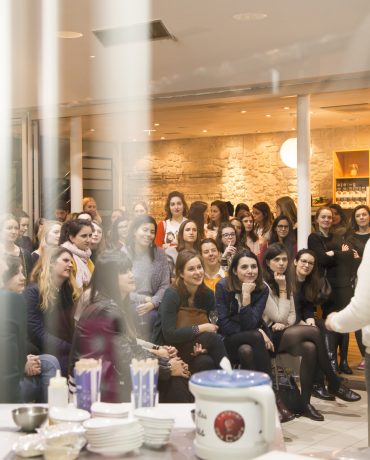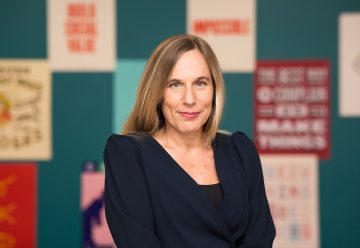
“At the origin of all knowledge, we find curiosity! It is an essential condition for progress”, said Alexandra David-Néel, the explorer and writer whose brilliant portrait appears in our book JE SUIS.
And she was right. If we go back to our book, we find Emilie du Châtelet, Marthe Gautier and Herminie Cadolle. What do they all have in common? A boundless curiosity.
The first was so curious that she disguised herself as a man to gain access to the knowledge circles of the time, and thus succeeded in becoming a great physicist, author of numerous scientific publications and the first woman to be published in the Académie des Sciences.
The second, driven by her curiosity (and a bit of audacity, it has to be said), decided to explore a subject nobody knew much about in the 50s: the study of the number of chromosomes in humans. That’s how she discovered Trisomy 21, previously known as “mongolism”. We’ll leave you to discover the rest of the story in the book, but if you have no idea who Marthe is today (like 99% of the French population), it’s because there’s a good (well, bad) reason for it.
The third, on a spring afternoon, wonders what it would be like to cut off the corset under the breasts, and thus invents the brassiere.
What the stories of these three women tell us is that curiosity has often been the starting point of great destinies, of immense scientific, artistic and social advances, of the most incredible innovations. It’s what gets things moving, and sometimes, society as a whole.
The great thing about curiosity is that we all have it within us. It’s an immense yet accessible power.
As children, we are born curious. We grow up without bias, without prejudice, trying to discover and unravel the world around us. We churn out the “whys” with sincerity and enthusiasm. Then, through inhibition, shyness or some other self-imposed limit, this thirst for learning and understanding is gradually extinguished. We’re afraid to admit we don’t know, we don’t dare take an interest in others, we don’t have the time to take the time.
And yet…
Curiosity shares its etymology with care: cura, meaning cure, as in curative.
The curious person would therefore be the one who takes care. The one who works on his or her own personal development, but also on that of others.
Last week, we talked about a harmonious world. And we told you that to achieve it, the solution was equality.
Well, for us (hold on to your hats), the tool for achieving the solution is curiosity.
Curiosity is a tool for equality, for achieving harmony in the world.
It may sound complicated, but it’s so simple.
Curiosity is a fabulous faculty that helps us to observe, understand, discover, grow, free ourselves and take the plunge. It pushes us to seize an opportunity, to dare to step outside the box. It allows us to consider that rules can change and that customs are designed to evolve. It pushes us to (re)question ourselves again and again.
Curiosity instantly connects us to others. It invites us to go beyond our prejudices, to question gender stereotypes and social norms that limit women in their choices, their progress and their personal and professional fulfillment. It develops empathy, and therefore the desire to get involved.
Curiosity is therefore an incredible tool for achieving equality between women and men.
So let’s use it! Let’s take the time to reflect and understand how this power can serve us, each and every one of us, to move forward on this challenge that brings us together.
Margaux






